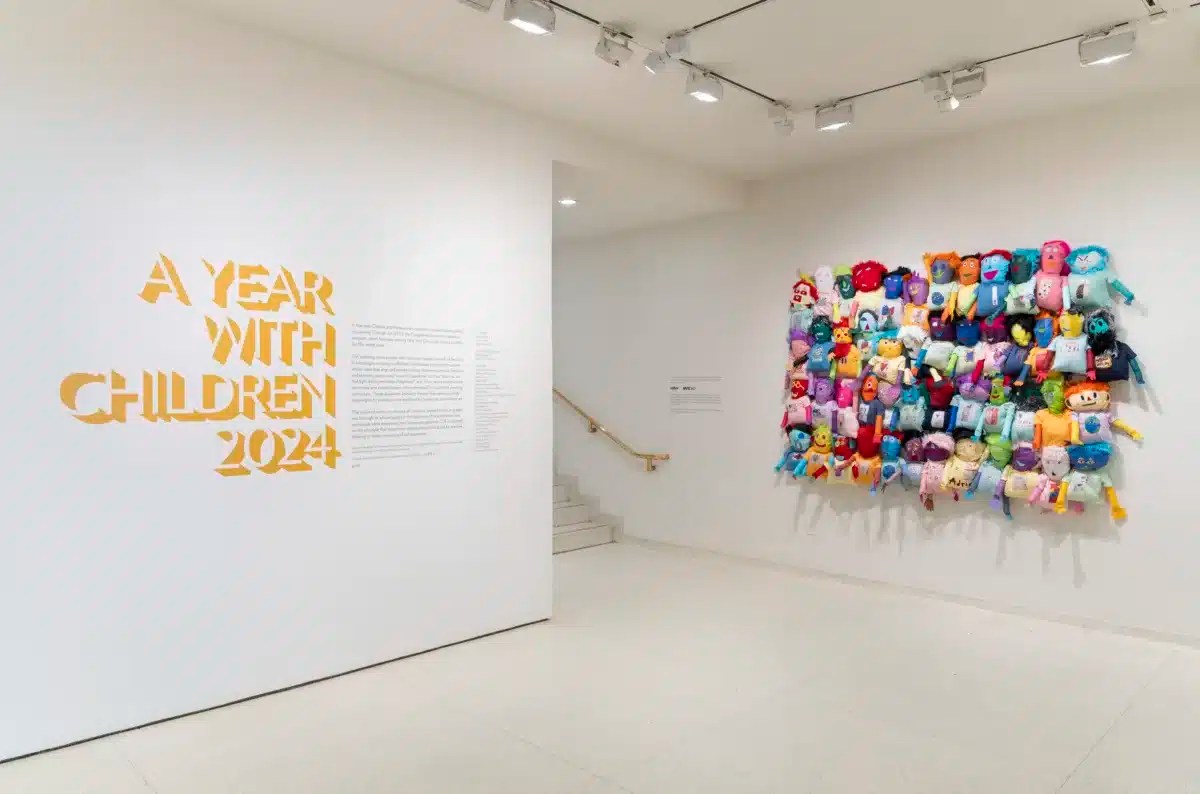There’s a set of midwife’s tools, a basin and a basket with a blanket laid out in the tiny bedroom. The tenement apartment on the Lower East Side, cramped even by today’s New York City real estate standards, was once home to the Levine family. Jennie and Harris’ third child, Max, was born right there in 1897 with the help of a midwife, according to his birth certificate. Just beyond is a slightly larger kitchen area with just enough space for an ironing board and a parlor that doubled as Mr. Levine’s dressmaking business, which employed three.
The bedroom is so small that only a couple visitors from the Tenement Museum tour group can fit in there at a time, but the crowd approximates the number of people who might have been in the apartment as a pregnant Jennie went about the cooking and cleaning and later as she gave birth. Normally, the bedroom and the birth might be mentioned in passing. But this is the “Tenement Bedrooms” tour, a special evening program that delves into the intimate questions that curious visitors have long asked (or perhaps longed to ask) about sex, birth control, prostitution and childbirth around the turn of the 19th century.
“Let’s just start in the bedroom,” Annie Polland, executive vice president of programs and interpretation, says of the tour devoted in its entirety to the mystery swirling around the smallest rooms at 97 Orchard St. The idea was born of the lingering questions visitors and educators had. Why did a family only have one or two kids? What kind of birth control could and did they use? She gave birth here? Where did they all sleep? How did they make that, umm, work with the kids sleeping so close by? Did that single mother do, ahem, other things to make money?
When the museum first offered the program in the spring, it quickly sold out. The three tour dates announced for October, November and December quickly filled too, but the tours will become as regular as a healthy menstrual cycle with monthly tours starting in March — “if not sooner,” Polland says.
“What we tried to do with each topic is to root it in something that happened to one of the families,” Polland explains. For example, William Lustgarden, the son of Austrian immigrants who lived and ran a kosher butcher shop in the building, worked as an investigator for the Committee of Fifteen, which Polland describes as “a Progressive-Era organization of uptown reformers, intent on reducing vice — including prostitution — in the tenements.” Another resident of the building, Fredericka Dreyer, had been accused of performing abortions back in her native Germany, an allegation that warranted a libel lawsuit.
But there are no existing journals from the tenement residents, and other kinds of historical records that tracked ordinary people can only answer so many bedroom-related questions. Some of the tour relies on educated speculation based on the laws of the time, geography and demographics, and what historians know about social and other trends.
From one room, museum educator Mary Kate Gliedt pointed out the window at Allen Street toward a section of the block that once housed several brothels. “We don’t have a record of anyone being a sex worker” among the residents, she said, but it’s easy to imagine a young, female garment worker needing money during the slack season turning to some form of sex work here and there, either at a brothel or independently, maybe even in the tenement.
Later, Gliedt described the Baldizzi family from Italy, who had two children, and the Schneiders from Germany, who had just one. Though the museum doesn’t know if or how they planned their families, one can theorize about their options based on the history of birth control in America, which was legal until the Comstock Act was passed in 1873.
Available forms in the late 19th and early 20th centuries included condoms, diaphragms and douches (including, in the later years, Lysol — yikes). It took almost seven decades for birth control to be re-legalized, during which time Margaret Sanger opened the country’s first birth control clinic, a predecessor to today’s Planned Parenthood, and worked through arrests and persecution. Many couples in the building started their families in those years before a judge lifted the federal ban on birth control for married couples in 1938. It wasn’t until 1972 that any woman, regardless of her marital status, could legally use birth control.
The Tenement Museum’s tours are always akin to journeying back in time, and they’re particularly captivating because they meander through the actual spaces where ordinary lives of another era unfolded. But as the October bedrooms program drew to a close, it became clear that beyond the walls of the time machine that whisked visitors a century into the past was a present world still struggling with similar issues.
“There’s a degree to which being a woman and having femininity and having a sexuality are not as much a taboo,” Gliedt says. What men and women once discussed in whispers they can now say out loud, and their children will have some kind of formal sex education at school. Things have changed over the decades and centuries, “not without work,” she adds. But “there are still plenty of vestiges.” Things she and women her age had begun taking for granted in the past decade, such as access to birth control and abortion, she says, “we might lose them next week depending on what he tweets.” He being President Donald Trump.
“It’s 2017 and you’d hope we would be a little more enlightened,” Gliedt says, that we’d be squarely in an era when it’s clear women should have control over their own bodies. But, she adds, “times don’t change that much.”
Until the “Tenement Bedrooms” tours return, visitors can check out “Shop Life,” “Hard Times” and “Irish Outsiders,” as well as walking tours through the neighborhood. The new permanent “Under One Roof,” which tells the stories of families who lived at 103 Orchard St. in the post-World War II era, is currently running free previews, and is expected to officially open on Dec. 2, Polland says.

















